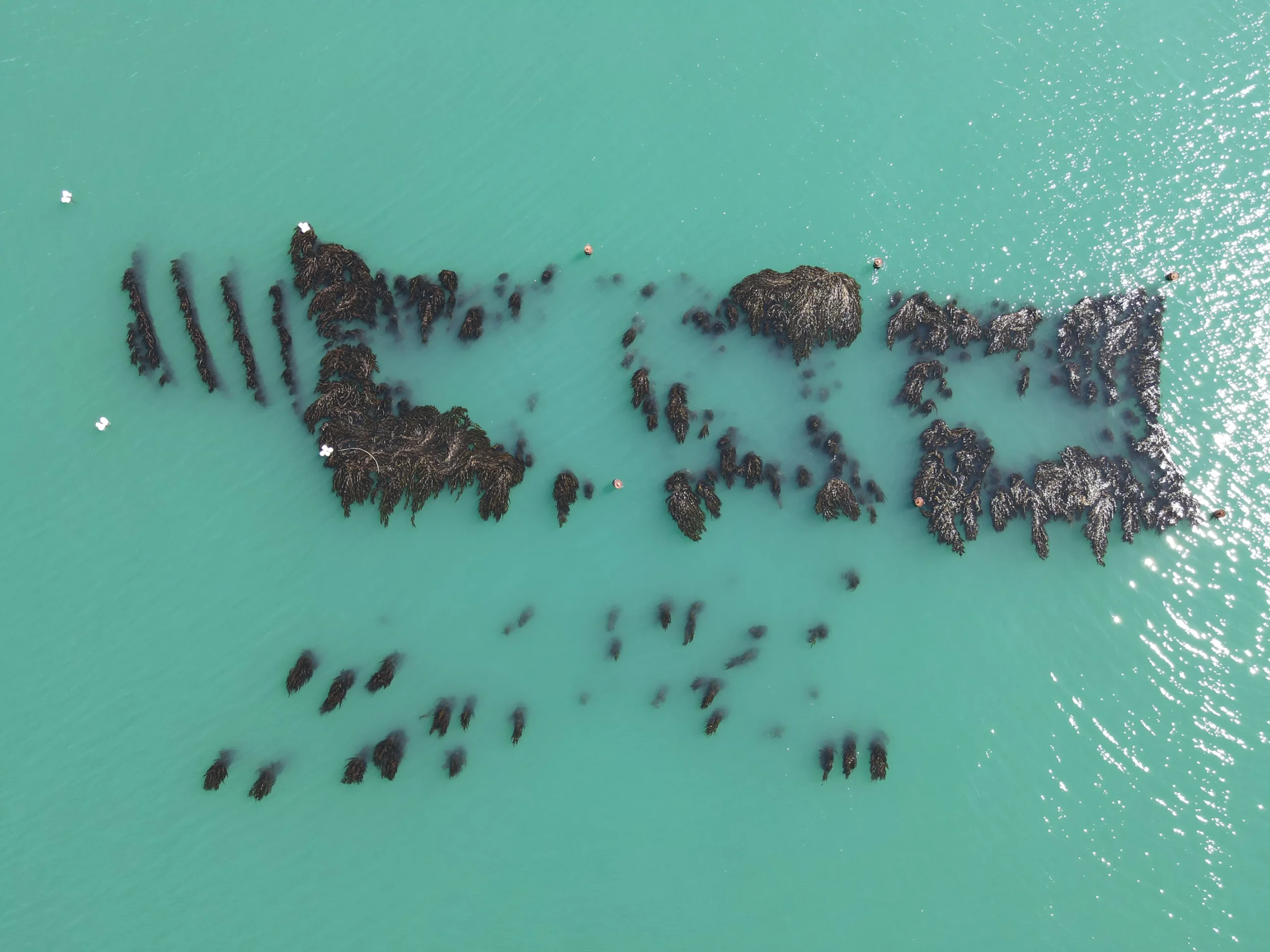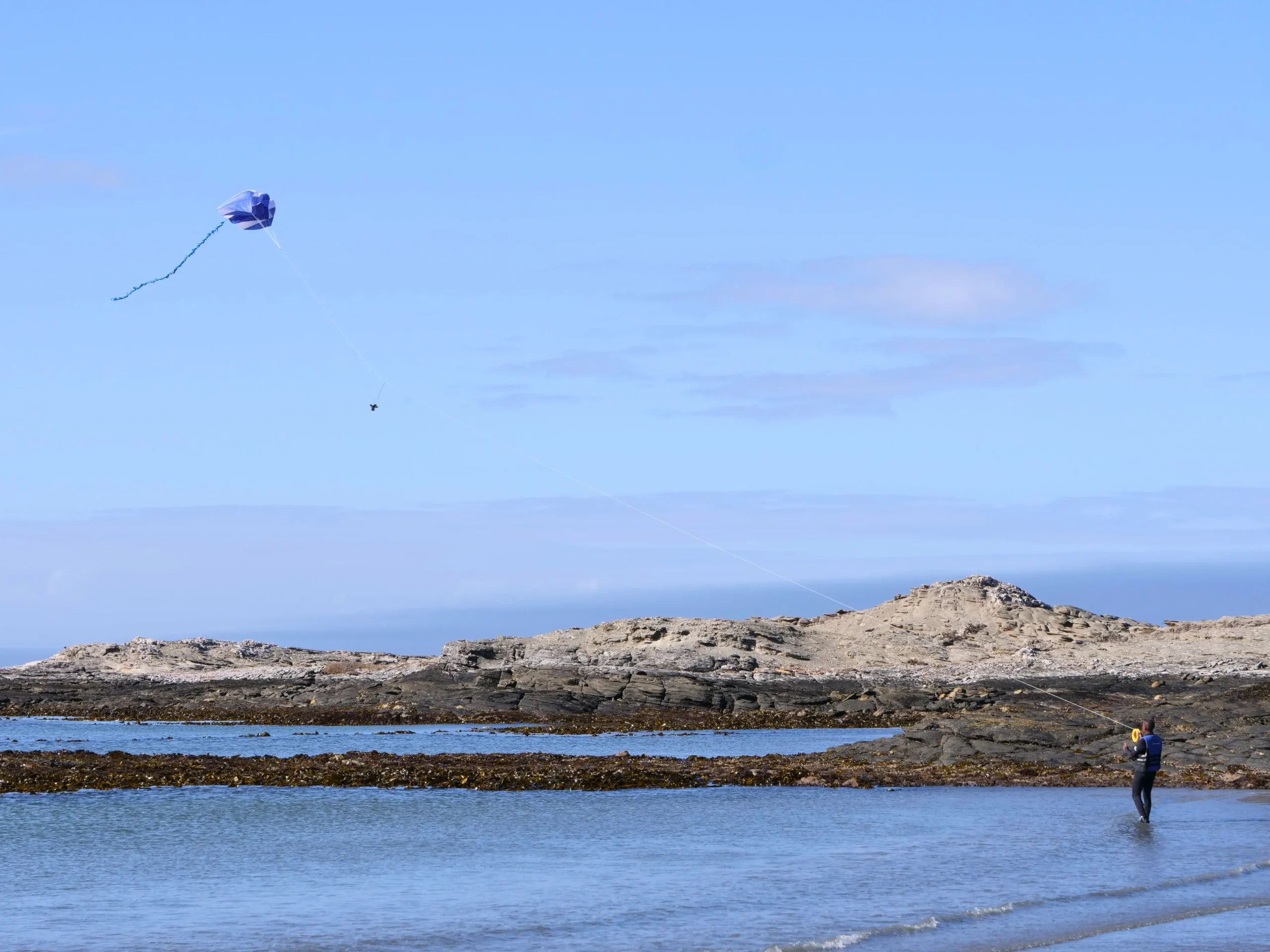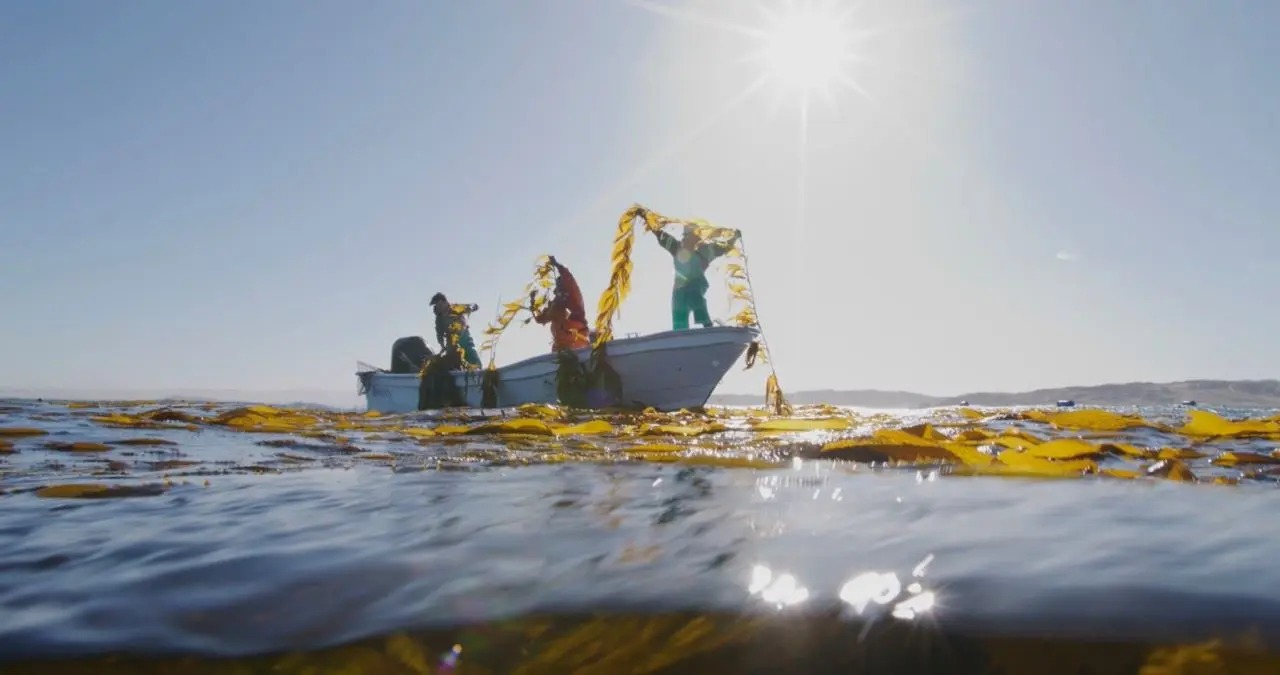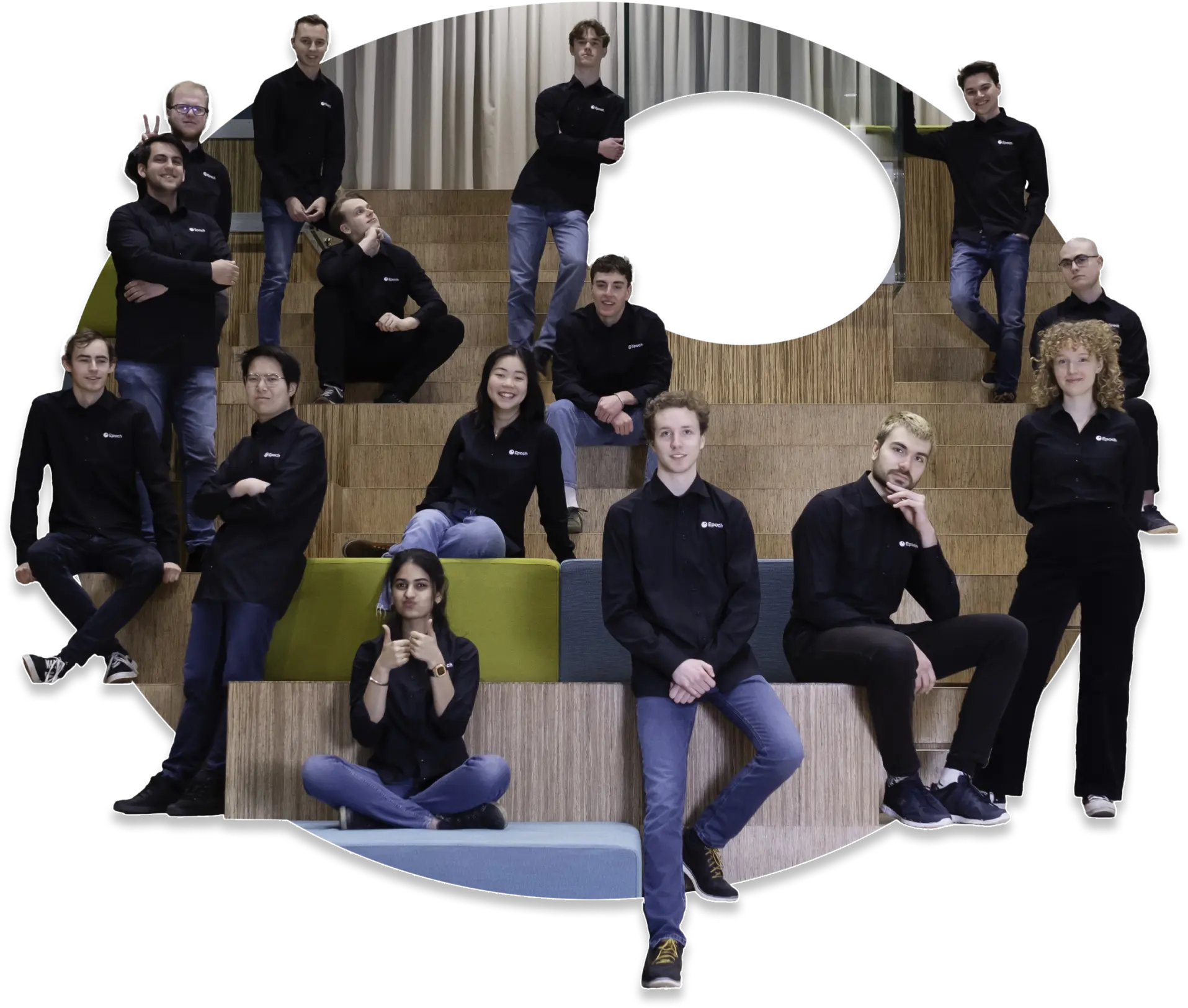The seaweed forests planted by Kelp Blue in Shearwater Bay, Namibia.
© P.J. Kotzé
Text Kim Bakker
In the battle against climate change and for protecting biodiversity, seaweed and kelp forests are of incalculable value around the world. Student team Epoch designed a winning AI model to monitor them.
Around one quarter of all the coastlines around the world, have extensive forests that are seldom seen by humans. Enormous kelp grow to up to 40 metres in height below the surface of the sea. These forests give shelter to and are food sources for countless species of marine animals. The forests are found all over the world, from the northern to the southern polar regions. It is estimated that all the forests combined would be the size of Europe. The very tall giant kelp (Macrocystis pyrifera) species of kelp stands out. They literally form a roof for the life below. But the Californian coastline now consists of little more than a desert-like seabed, says Derek Lomas. He has been researching positive AI at TU Delft since 2017, and thinking about how AI can make the world a better place. This brought him to live in the American town of San Diego. In the last decade, he saw 90% of all the kelp forests in the sea in front of this Californian city disappear.

A seaweed forest from the air.
© Kelp Blue

Giant kelp on the sea surface off the coast of Namibia.
© Kelp Blue
Sunflower sea star
The reason for the disappearance was the massive die off of the sunflower sea star, a starfish with 24 arms that hunts sea urchins. An unknown disease caused almost the entire population in the area to lose all their arms in a few years’ time. Warmer seawater caused by climate change may be the cause. All that remained were sad lumps of flesh. With no predator around, the kelp eating sea urchins multiplied. Divers off the coast of California no longer saw impenetrable, endless forests of giant kelp, but empty deserts full of sea urchins. The sea urchins were not going anywhere as they can survive for years without food. But the kelp was doomed. In an attempt to change things, Lomas’ diver friends dived with hammers, he says. They used the hammers to flatten the sea urchins. In the meantime, projects to reintroduce the predatory starfish have started. While divers can go out at random to see if it is working, it is more efficient to design a method to monitor the growth of kelp at a larger scale. Lomas’ heart jumped when he saw that there was a student team at his university, TU Delft, that had designed a model that could do this.
Student team Epoch
Student team Epoch’s adventure started last autumn, says Suusje Helwegen, the student team’s Public Relations team member. The students then signed up for the American Woods Hole Oceanographic Institute’s competition. Their objective was to create an algorithm that would predict the presence and loss of kelp forests using satellite images.This competition was perfect for the team whose intention is to enter competitions for societally relevant issues. While other Dream Teams at TU Delft share this mission, what sets Student team Epoch apart is that they do not only work towards a physical product like a vehicle or boat. Instead, their goal is to design algorithms. Another difference is that the team enters differently themed competitions four times a year.
Divers no longer saw impenetrable, endless forests of giant kelp, but empty deserts full of sea urchins
Biomass from kelp forests
To understand the background of the competition, Team Epoch sought out kelp researcher Michael Mateus. He has a grant rom the Kelp Forest Foundation to carry out research at Kelp Blue, a Namibian organisation that grows kelp forests. He works on measuring the biomass from the kelp forests along his country’s coastline. In doing so, he uses satellite images and acoustic data. In contrast to those in California, the kelp forests off the shores of Namibia are barely mapped. “We actually barely know how the kelp forests are doing,” says Mateus. The AI model could change this. Just as in California, the kelp in Namibia is an important ecosystem. Mateus lists their benefits. “The kelp forests are a carbon sink, absorbing huge amounts of CO2. They are the living and reproduction areas for all sorts of plants and animals. They emit oxygen into the water. They protect the coastline from erosion. I could go on and on.” Humans can also benefit from the multifunctional material for things like bioplastics, medicines and cosmetics.

Researchers sail through a seaweed forest off the coast of Namibia.
© Kelp Blue
Three submissions a day
For the team, being part of the kelp forest competition meant three months of hard work. They received three submissions a day so that they could rapidly see every update in the algorithm.
Of the 671 teams, team Epoch crept in third place soon before the end. Things got really exciting then, says Helwegen looking back. “Before the final result, the model was tested in a different database to the one that we had worked with.” This turned out to be the case and Team Epoch won.
In the competition, the teams used images from Landsat satellites which have photographed the entire surface of the earth since 1984. But you are not quite there with only those images. The AI model also relies on the collective results of a large citizen science contribution.
Tens of thousands of classifications
From 2014, volunteers could sign up on the Floating Forests platform to identify kelp on the satellite images. This helped the kelp researchers collect tens of thousands of classifications. Adding information from divers that did random visits to the kelp forests, methods like these were the norm for a long time. Team Epoch trained its AI model using this existing information. The algorithm can then extend the results to the scale of the earth. For kelp scientists like Michael Mateus, this is a dream come true. “It takes us a very long time to analyse the images one by one. AI can do this more quickly, efficiently, accurately and consistently.” Team Epoch’s model will be made available open source by the Woods Hole Oceanographic Institute so anyone can use it.
The student team is now busy working on the next competition. Its new mission is to design an AI model which will be able to properly classify damaging brain activity. Their previous achievement is really impressive, stresses Positive AI researcher Derek Lomas again. “It opens so many doors for new research. They have really created something wonderful.”

Team Epoch 2023-2024: “We are training ourselves to become morally aware and experienced engineers working together towards a better world.”
TU Delft’s Dream Team
TU Delft’s dream teams are known worldwide. These interdisciplinary student teams compete each year in a competition to put technical innovation on the map that contributes to a better future. Team Epoch’s mission is to ‘contribute to the positive development of AI’. The team builds AI models that contribute to the Sustainable Development Goals of the United Nations. In the coming period, Team Epoch will work on the classification of noxious brain activity. In previous competitions, they engaged in, among other things, developing an AI model that recognises the signs of American Sign Language (ASL) in video footage; and using AI to estimate the amount of above-ground biomass in a forest in Finland.
